Another communication management process that is common to construction projects and for which the project team needs to report is the status of business items discussed in those meetings. By definition, meetings are scheduled gatherings of individuals for the stated purpose, to discuss and act upon matters of common interest. Meetings serve a valuable purpose in the constriction project to effectively communicate information, exchange ideas, render decisions, resolve issues, coordinate work, and prevent problems.
The success of having meetings is to have a clear objective for a meeting. On a construction project, there are meetings for project kick-off, site mobilization, construction progress, pre-installation, health, safety, security, and environment (HSSE), quality review, closeout, and others. For each meeting purpose, there are different participants lists and agendas.
To be able to manage the business items that are part of each meeting minutes, PMWeb provides the parties involved in delivering construction projects with a single, web-enabled platform to manage meeting minutes. The PMWeb solution enables the project controls team members and other project team members to have a single real-time version of the truth of all meeting business items still pending or requiring actions to close.
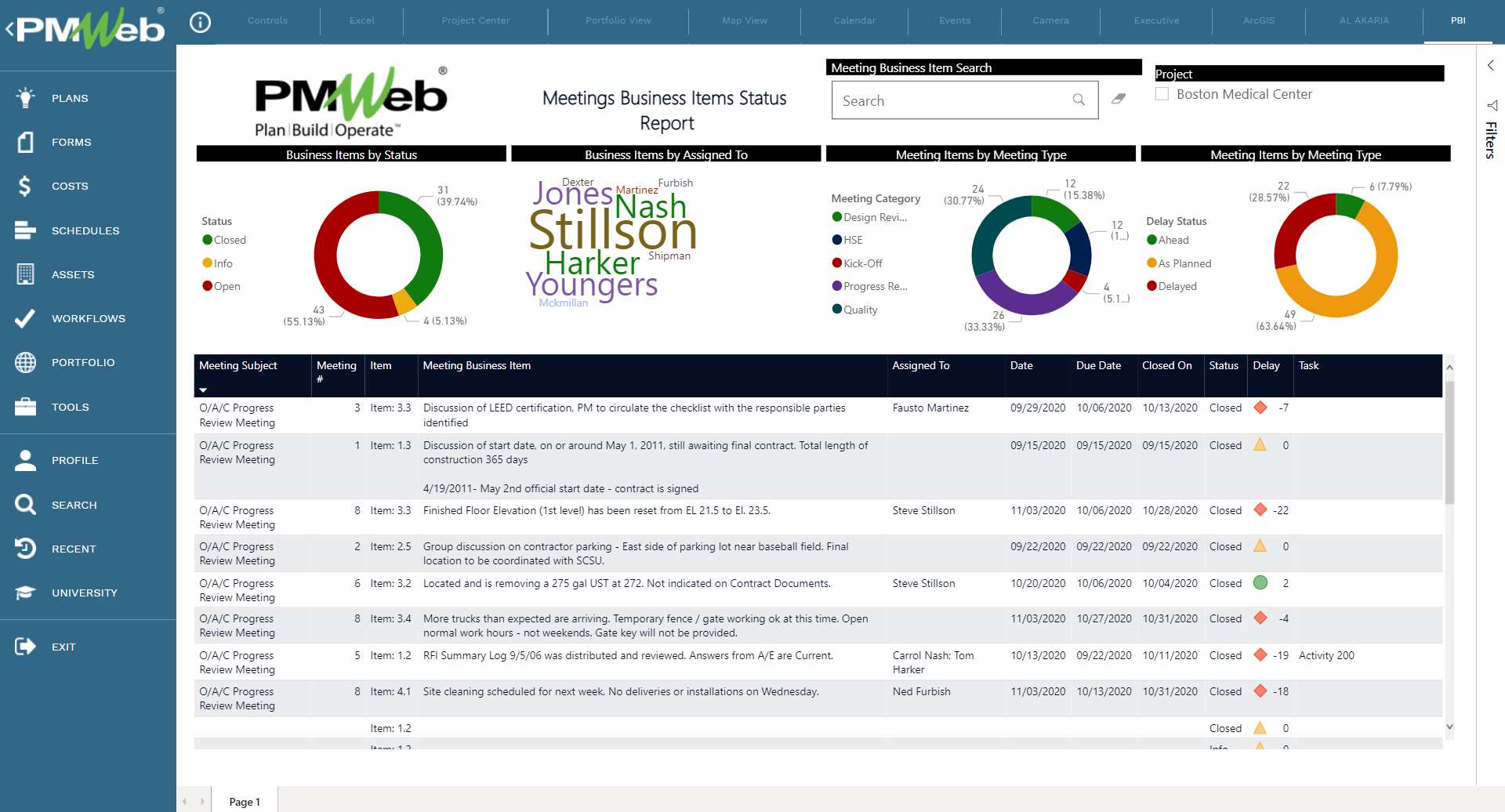
To achieve this reporting on the status of meetings’ business items, there is a need to capture the details of each business item. Those include the description of the business items discussed during the meeting, the project team members assigned to take action on these items, by which date it is due, the status of each business item if it is still open or has been closed, the actual date this item was closed, and the project schedule activity that could be subject to a delay if the item is not closed as per the set due date. Further details, such as business item category and type, can of course be added to improve the classification of these business items.
In addition, there is a need to capture the particulars of the meeting at which those business items were brought up. The particulars of each meeting include the project it relates to, the meeting type based on a predefined list of values, the meeting subject, WBS level that the meeting is associated with, meeting location or venue, date, and timing. In addition, there is a need to capture the details of those individuals who were invited to attend the meeting and those who actually attended.
Like other PMWeb modules, documents such as drawings, reports, pictures, videos, and catalogs, can be attached to the meeting minutes to ensure they can be reviewed when necessary. As well, the meeting minutes could have links to other PMWeb records like submittal, risk register, and changes, among others that can be linked to the meeting minute.
To enable tracking the history of all business items captured in the meeting module, PMWeb allows generating the agenda for the next scheduled meeting using the ‘Create Next’ command. This command automatically increments the meeting number by one. In addition, it removes all business items marked as ‘Done,’ and only those not marked as ‘Done’ get copied to the next meeting.
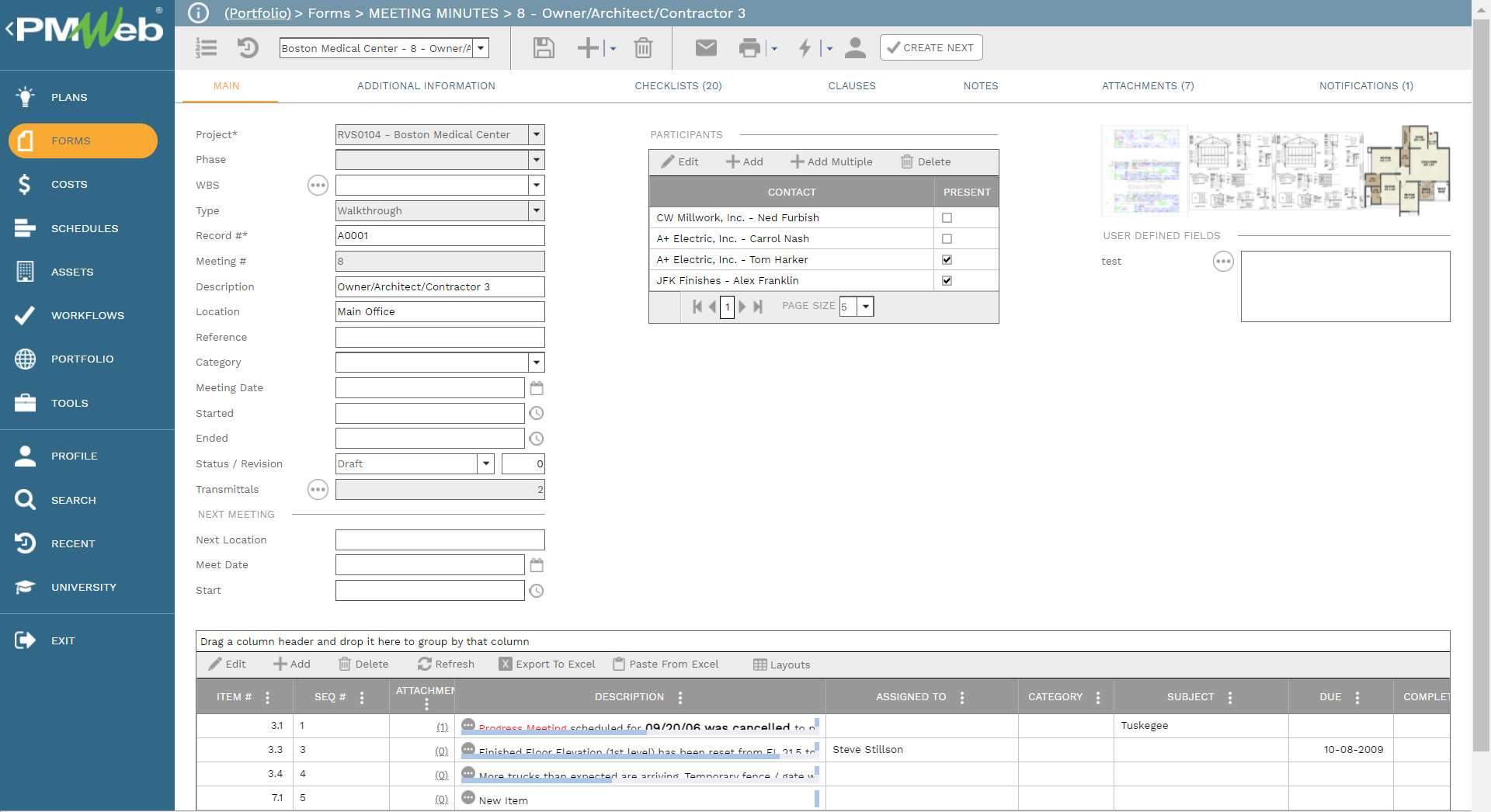
A meeting minutes output form can be created for projects that require the party authoring the meeting minutes to formally communicate the meeting minutes. The meeting minutes’ layout can vary from one project to another and even between one meeting type and another. These printed meeting minutes could be designed in an intelligent format to provide the authorized reader with the option to drill down to the meeting minutes item captured in PMWeb to review all the attached documents and linked records to that particular meeting minutes business item.
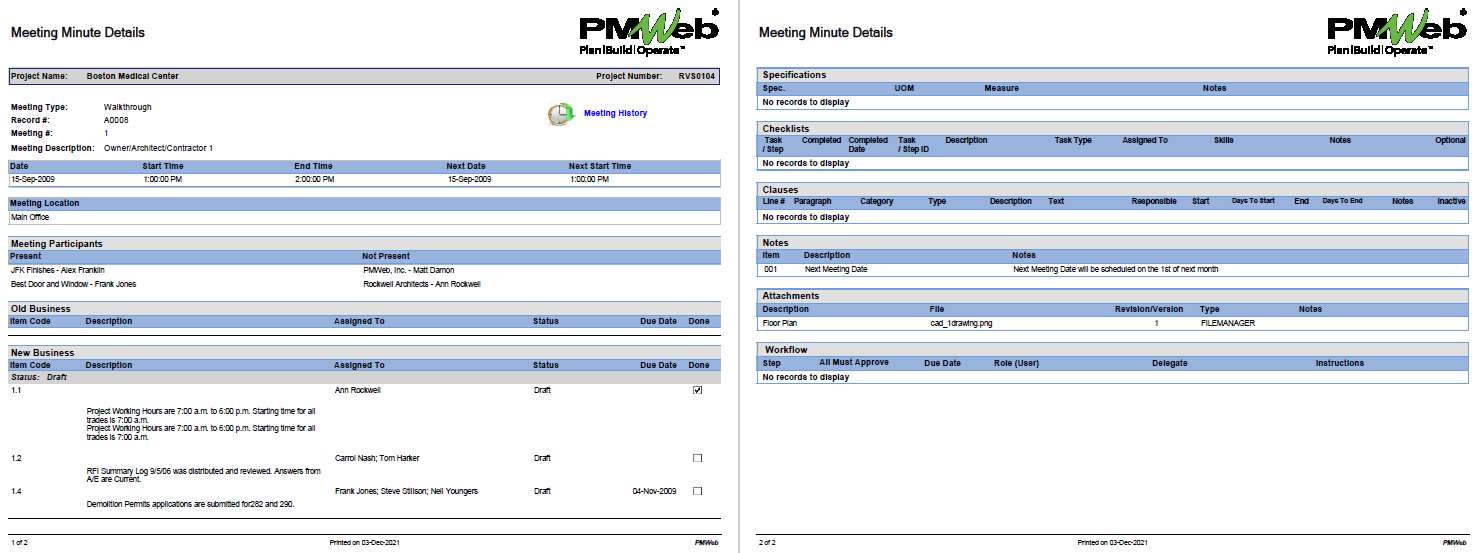
The PMWeb report writer can create reports to track the status of the different business items discussed and recorded in the meeting minutes. For example, a report can be created to capture the history of every business item, when first recorded, and when closed. It could include filters to limit the reported data to a specific individual to which the business items were assigned. The report could also be limited to a single type of meeting minutes for a single project or portfolio of projects or all meeting types across a single project or portfolio of projects.
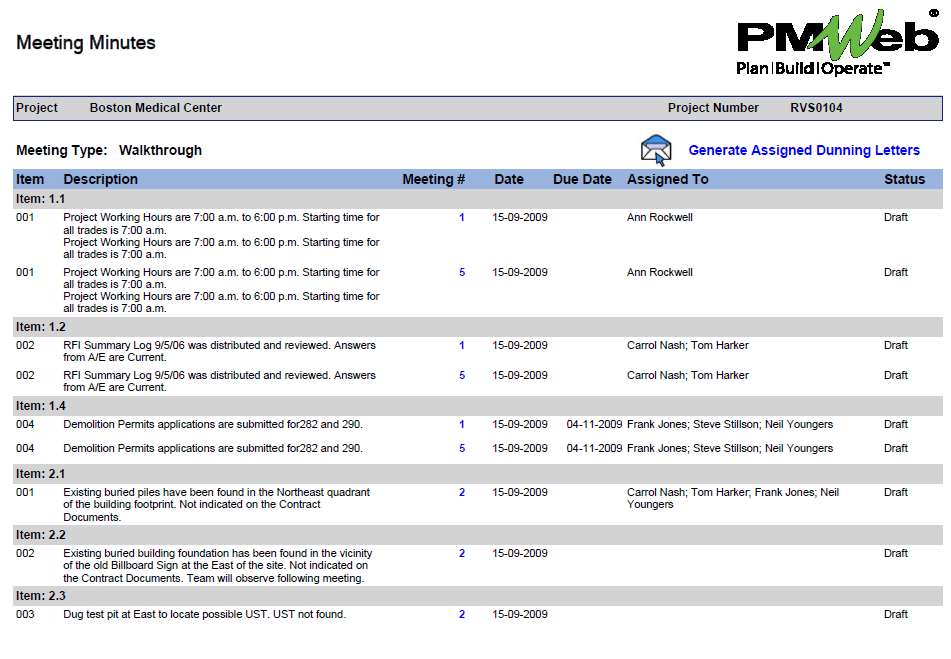
The PMWeb report writer can also design reminder letters to drive actions from project team members to respond and close their pending meeting business items. These reminder letters are personally addressed to each team member by name, listing all due business items assigned to the team member. These letters are configured to generate from the report of the pending actions.
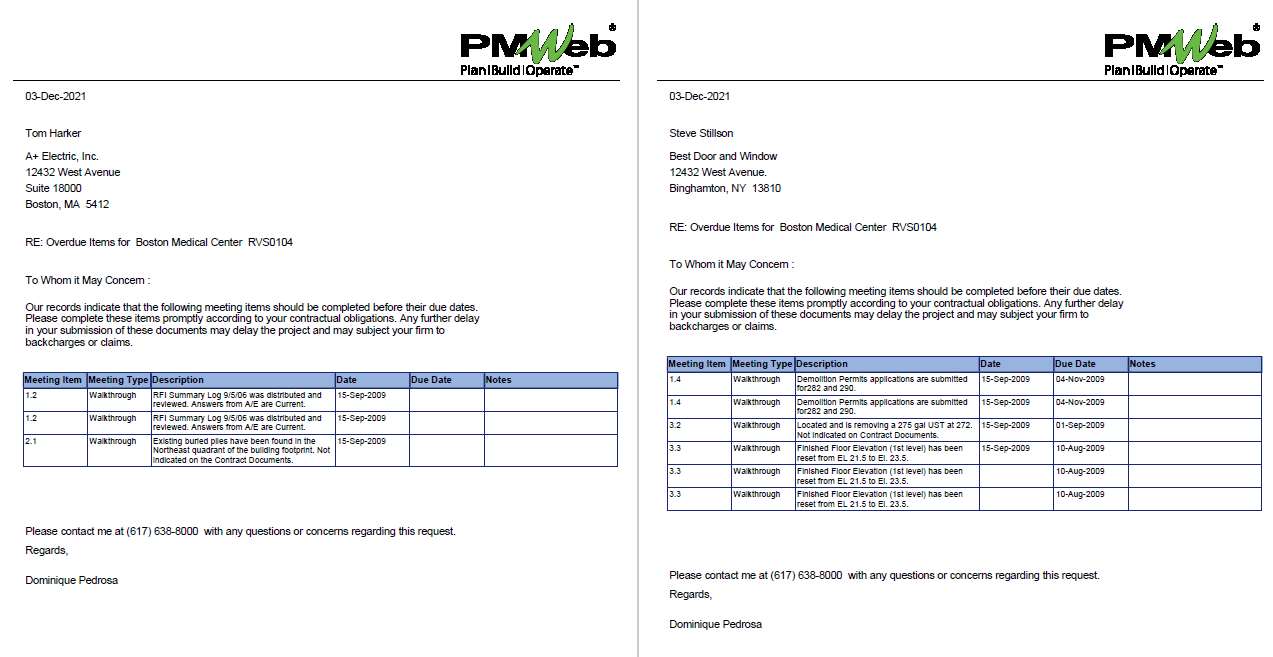
Reference
The content of this article was extracted from the book titled “Let’s Transform: Enabling Digital Transformation of Capital Construction Projects Using the PMWeb Project Management Information System – 2nd Edition” written by Bassam Samman.
The book provides project owners with oversight on how technology available today can support their efforts to digitally transform the management of their projects’ portfolios. For each capital project life cycle stage, PMWeb is used to detail how the relevant project management business processes can be digitalized to enforce transparency and accountability in delivering projects. In addition, MS Power BI was used to show how the real-time, trustworthy data captured in PMWeb can be aggregated, modeled, monitored, evaluated, analyzed, and reported at anytime, anywhere using any device.



